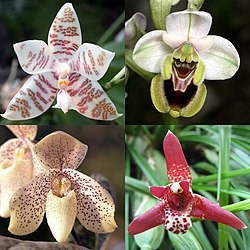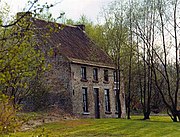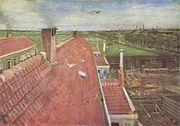
Valentine of Terni became bishop of Interamna (modern Terni) about AD 197 and is said to have been killed during the persecution of Emperor Aurelian. He is also buried on the Via Flaminia, but in a different location than Valentine of Rome. His relics are at the Basilica of Saint Valentine in Terni (Basilica di San Valentino).
The Catholic Encyclopedia also speaks of a third saint named Valentine who was mentioned in early martyrologies under date of February 14. He was martyred in Africa with a number of companions, but nothing more is known about him..
No romantic elements are present in the original early medieval biographies of either of these martyrs. By the time a Saint Valentine became linked to romance in the fourteenth century, distinctions between Valentine of Rome and Valentine of Terni were utterly lost.
In the 1969 revision of the Roman Catholic Calendar of Saints, the feastday of Saint Valentine on February 14 was removed from the General Roman Calendar and relegated to particular (local or even national) calendars for the following reason: "Though the memorial of Saint Valentine is ancient, it is left to particular calendars, since, apart from his name, nothing is known of Saint Valentine except that he was buried on the Via Flaminia on February 14." The feast day is still celebrated in Balzan (Malta) where relics of the saint are claimed to be found, and also throughout the world by Traditionalist Catholics who follow the older, pre-Vatican II calendar.
The Early Medieval acta of either Saint Valentine were excerpted by Bede and briefly expounded in Legenda Aurea. According to that version, St Valentine was persecuted as a Christian and interrogated by Roman Emperor Claudius II in person. Claudius was impressed by Valentine and had a discussion with him, attempting to get him to convert to Roman paganism in order to save his life. Valentine refused and tried to convert Claudius to Christianity instead. Because of this, he was executed. Before his execution, he is reported to have performed a miracle by healing the blind daughter of his jailer.
Legenda Aurea still providing no connections whatsoever with sentimental love, appropriate lore has been embroidered in modern times to portray Valentine as a priest who refused an unattested law attributed to Roman Emperor Claudius II, allegedly ordering that young men remain single. The Emperor supposedly did this to grow his army, believing that married men did not make for good soldiers. The priest Valentine, however, secretly performed marriage ceremonies for young men. When Claudius found out about this, he had Valentine arrested and thrown in jail. In an embellishment to The Golden Legend, on the evening before Valentine was to be executed, he wrote the first "valentine" himself, addressed to a young girl variously identified as his beloved, as the jailer's daughter whom he had befriended and healed, or both. It was a note that read "From your Valentine














